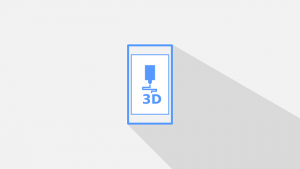
3D printing is a complex manufacturing process that uses a machine, known as a 3D printer, to build three-dimensional objects from raw material. 3D printers take the raw material and deposit it onto a print bed, slowly building the object layer by layer. When researching 3D printers, however, you’ll encounter some otherwise confusing terms, one of which is a road. Unless you’ve used 3D printers in the past, you might be wondering what a road is and how it works in 3D printing applications.
Overview of Roads
No, roads aren’t paved paths on which vehicles and automobiles drive. In 3D printing, a road is a small bead of extruded material that’s released from a 3D printer’s nozzle. It receives its namesake from its guided path. 3D printers release material in specific areas of the print bed. The print bed is a substrate on which objects are constructed. During operation, the 3D printer will extrude material onto the print bed. As the material is extruded out of the 3D printer’s nozzle, it forms a bead that’s colloquially known as a road.
It’s important to note that only some 3D printers use roads. Rather, roads are only produced by fused filament fabrication (FFF) and similar types of 3D printers. The most common type of 3D printer, an FFF 3D printer builds objects from a filament of plastic or thermoplastic material. The material is extruded out of the 3D printer’s nozzle, thereby forming a bead that drops onto the print bed.
How 3D Printers Produce Roads
FFF and similar 3D printers produce by roads by extruding raw material out of their respective nozzle. They contain a filament of raw material — typically plastic or thermoplastic — that’s located behind the nozzle. As the 3D printer moves over the print bed, it will feed the material through the nozzle. The nozzle features a cross-sectional shape so that the material is extruded during this process. When the material is released, it takes the shape of a small bead. This bead is known as a road.
In Conclusion
A road is a bead of extruded material that’s used to build objects in 3D printing applications. They are formed by FFF and similar types of 3D printers that extrude raw material out of a nozzle. The 3D printers don’t just release the material filament; they extrude it. As they extrude the raw material, the 3D printers produce a bead or road that’s used to build the object layer by layer.
